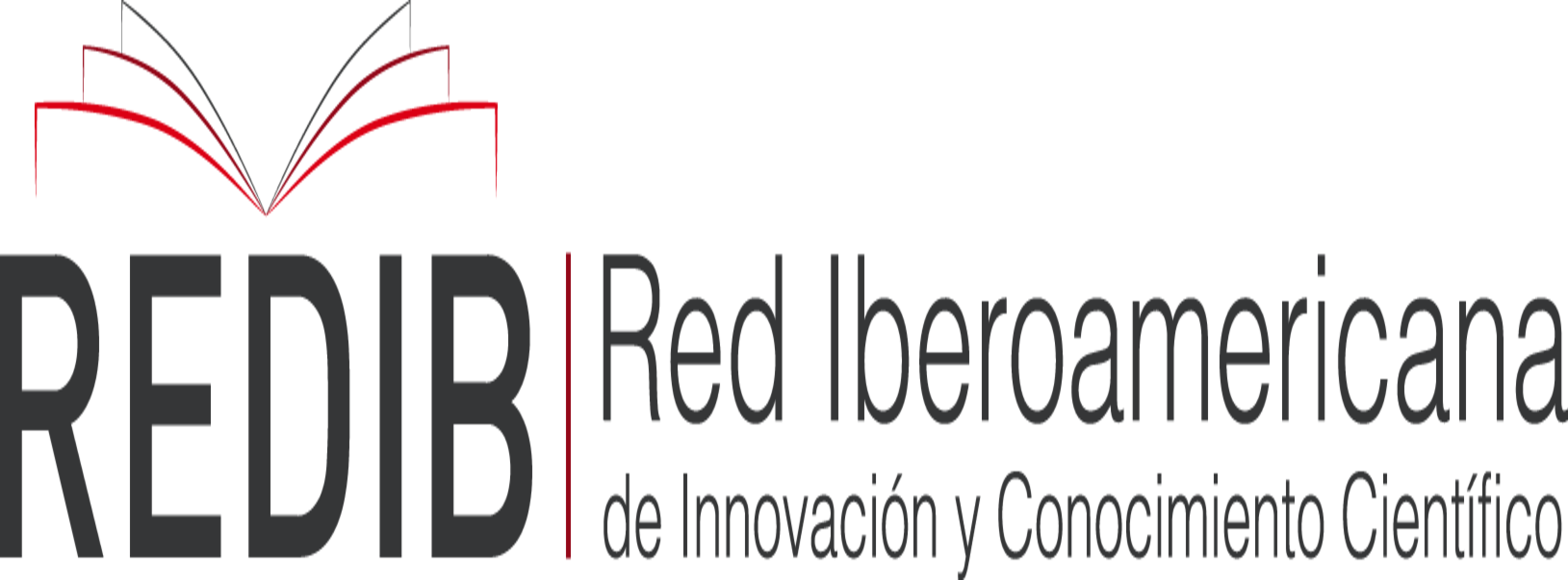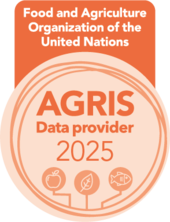Bebida de kombucha con sabor a guayaba (Psidium guajava): Compuestos antioxidantes, fisicoquímicos y aceptabilidad sensorial
DOI:
https://doi.org/10.57188/manglar.2025.017Palabras clave:
antioxidantes, guayaba, kombucha, levaduras, sensorialResumen
El objetivo del presente estudio fue evaluar los compuestos antioxidantes, fisicoquímicos y sensoriales en una bebida de kombucha sabor a guayaba. Se aplicó un diseño completamente al azar con arreglo factorial, el factor en estudio correspondió a las concentraciones de fruta de guayaba al 10%, 20%, 30% y 40%. Se establecieron 5 tratamientos incluido un control. Se utilizó análisis de varianza, prueba de Dunnett y Kruskal Wallis al 5% de significancia. Se evaluaron parámetros de perfil funcional, fisicoquímicos, microbiobiológicos, colorimetría, sensoriales, estabilidad probiótica y levaduras. Se presentaron excelentes resultados en cuanto a fenoles totales (200,23 ± 0,36 – 242,36 ± 1,52 mg ácido gálico equivalente/100 mL) y antioxidantes (85,85 ± 1,92 – 132,08 ± 1,25 (DPPH); 206,05 ± 4,61 – 317,01 ± 3,01 (ABTS) µmol trolox equivalente/100 mL). El atributo aroma presentó significancia estadística (p < 0,05), mientras que, color, sabor y apariencia general fueron no significativos (p > 0,05). Los tratamientos con factor en estudio presentaron inestabilidad en el conteo de levaduras. Todas las formulaciones cumplieron con los requisitos fisicoquímicos y microbiológicos exigidos en la norma internacional DUS 2037 “Kombucha-Specification”. Se demostró que un 40% de fruta de guayaba aumentó el contenido de compuestos bioactivos en la bebida de kombucha.
Descargas
Referencias
Abdul, A., Ahmed, I., Rehab, I., Moustafa, A., Abou, A., & Enan, G. (2021). Chemical constitution and antimicrobial activity of kombucha fermented beverage. Molecules, 26(16), 1-10. https://doi.org/10.3390/molecules26165026
Akarca, G. (2021). Determination of potential antimicrobial activities of some local berries fruits in kombucha tea production. Brazilian Archives of Biology and Technology, 64, 1-15. https://doi.org/10.1590/1678-4324-2021210023
Campos, M., Souza, D., Macedo, G., Lima, I., Mendes, A., & Castro, L. (2021). Effect of kombucha intake on the gut microbiota and obesity-related comorbidities: A systematic review. Critical Reviews in Food Science and Nutrition, 4-19. https://doi.org/10.1080/10408398.2021.1995321
Cantillo, J., Sinuco, D., & Solarte, M. (2011). Estudio comparativo de los compuestos volátiles de tres variedades de guayaba blanca (Psidium guajava L) durante su maduración. Revista Colombiana de Química, 40(1), 79-90.
Dolkar, D., Bakshi, P., Gupta, M., & Kher, D. (2017). Biochemical changes in guava (Psidium guajava) fruits during different stages of ripening. The Indian Journal of Agricultural Sciences, 87(2), 257-260. https://doi.org/10.56093/ijas.v87i2.67659
Dos Santos, D., Leonarskid, E., Rossoni, M., Alves, V., Passos, C., & Zanella, V. (2024). Honey-kombucha beverage with yerba maté infusion: Development, polyphenols profile, and sensory acceptance. International Journal of Gastronomy and Food Science, 1-12. https://doi.org/10.1016/j.ijgfs.2024.100909
DUS 2037. (2018). Kombucha— Specification. En línea: https://members.wto.org/crnattachments/2018/SPS/UGA/18_5342_00_e.pdf
Estrada, H., Restrepo, C., Saumett, H., & Pérez, L. (2018). Deshidratación osmótica y secado por aire caliente en mango, guayaba y limón para la obtención de ingredientes funcionales. Información Tecnológica, 29(3), 197-204. https://doi.org/10.4067/S0718-07642018000300197
Freitas, A., Sousa, P., & Wurlitzer, N. (2022). Alternative raw materials in kombucha production. International Journal of Gastronomy and Food Science, 30, 1-10. https://doi.org/10.1016/j.ijgfs.2022.100594
Lazzaroli, C., Sordini, B., Daidone, L., Veneziani, G., & Esposto, S. (2023). Recovery and valorization of food industry by-products through the application of Olea europaea L. leaves in kombucha tea manufacturing. Food Bioscience, 53, 1-14. https://doi.org/10.1016/j.fbio.2023.102551
Li, S., Zhang, Y., Gao, J., Li, T., Li, H., Mastroyannis, A., & He, S. (2022). Effect of fermentation time on physiochemical properties of kombucha produced from different teas and fruits: Comparative Study. Journal of Food Quality, 1-10. https://doi.org/10.1155/2022/2342954
Massoud, R., Jafari, R., Naghavi, N., & Khosravi, K. (2022). All aspects of antioxidant properties of kombucha drink. Biointerface Research in Applied Chemistry, 12(3), 4018 - 4027. https://doi.org/10.33263/BRIAC123.40184027
Mehta, S., Singh, K., Jat, D., & Rana, D. (2016). Comparative studies of physico-chemical characteristics of various cultivars of guava (Psidium guajava L.) under subtropical valley condition of Garhwal Himalaya (Uttarakhand), India. Plant Archives, 16(1), 361-364.
Muzaifa, M., Rohaya, S., Nilda, C., & Harahap, K. (2022). Kombucha fermentation from cascara with addition of red dragon fruit (Hylocereus polyrhizus): analysis of alcohol content and total soluble solid. Advances in Biological Sciences Research, 17, 125-129. https://doi.org/10.2991/absr.k.220102.020
Neffe, K., Sionek, B., ´Scibisz, I., & Kolozyn, D. (2017). Acid contents and the effect of fermentation condition of Kombucha tea beverages on physicochemical, microbiological and sensory properties. CyTA - Journal of Food, 15(4), 601-607. https://doi.org/10.1080/19476337.2017.1321588
Negrete, C. (2021). Valoración del ácido ascórbico en una bebida de soya (Glycine max) y guayaba (Psidium guajava) aplicando tres temperaturas de pasteurización. Trabajo Experimental para optar por el título de Ingeniero Agrícola. Universidad Agraria del Ecuador.
Phung, L., Kitwetcharoen, H., Chamnipa, N., Boonchot, N., Thanonkeo, S., & Tippayawat, P. (2023). Changes in the chemical compositions and biological properties of kombucha beverages made from black teas and pineapple peels and cores. Scientific Reports, 13(7859), 1-20. https://doi.org/10.1038/s41598-023-34954-7
Ri, K., JO, K., RA, K., Suh, H., & Hong, K. (2022). Kombucha fermentation using commercial kombucha pellicle and culture broth as starter. Food Science and Technology, 1-7. https://doi.org/10.1590/fst.70020
Rodríguez, D., Colominas, A., & Rodríguez, W. (2020). Whey beverage fermented with addition of wheat bran and guava pulp (Psidium guava L.). Tecnología Química, 40(2), 428-441.
Romano, G., Pinto, R., Almeida, É., Abreu, V., Pereira, R., & Fernandes, A. (2023). Kombucha based on unconventional parts of the Hibiscus sabdariffa L.: Microbiological, physico-chemical, antioxidant activity, cytotoxicity and sensorial characteristics. International Journal of Gastronomy and Food Science, 34, 1-14. https://doi.org/10.1016/j.ijgfs.2023.100804
Ruo, X., Dan, Z., Cheng, J., Si, W., Saimaiti, A., & Si, H. (2024). Preparation and evaluation of liquorice (Glycyrrhiza uralensis) and ginger (Zingiber) officinale kombucha beverage based on antioxidant capacities, phenolic compounds and sensory qualities. International Journal of Gastronomy and Food Science, 35, 1-9. https://doi.org/10.1016/j.ijgfs.2024.100869
Sornkayasit, K., Jumnainsong, A., Srijampa, S., Ruknarong, L., Buddhisa, S., & Thanonkeo, P. (2024). Immunomodulatory potentials of modified kombucha with pineapple by-products in aging: An ex vivo study. Journal of Functional Foods, 112, 1-15. https://doi.org/10.1016/j.jff.2023.105933
Treviño, M., Guerreo, A., González, R., & García, C. (2020). Production of microbial cellulose films from green tea (Camellia Sinensis) Kombucha with various carbon sources. Coatings, 10(11), 11-32. https://doi.org/10.3390/coatings10111132
Trovatti, A., Cosme, D., Rodrigues, W., Gomes, R., Albano, H., & Kato, R. (2021). Microbial–physicochemical integrated analysis of kombucha fermentation. Food Science and Technology, 148, 1-18. https://doi.org/10.1016/j.lwt.2021.111788
Vargas, H., Azuara, A., Lara, J., Ibarra, K., & Grifaldo, P. (2018). Picudo de la guayaba Conotrabelus dimidiatus (Champion) una plaga de importancia económica para el cultivo de guayaba Psidium guajava L en México. Revista Mexicana de Fitosanidad, 2(3), 25-38.
Villalba, E. (2022). Estudio Técnico - Económico para la instalación de una planta productora y envasadora de jugo de guayaba. Trabajo de Titulación para optar por el título de Ingeniero Industrial. Universidad de Guayaquil.
Xiaotong, W., Dahong, W., Hemin, W., Shiyang, J., Jinpeng, W., Yuxin, H., & Jiangfeng, Y. (2022). Chemical profile and antioxidant capacity of kombucha tea by the pure cultured kombucha. LWT - Food Science and Technology, 168, 1-9. https://doi.org/10.1016/j.lwt.2022.113931
Yam, A., Villaseñor, C., Soto, M., Romantchik, E., & Peña, M. (2010). Una revisión sobre la importancia del fruto de Guayaba (Psidium guajava L.) y sus principales características en la postcosecha. Revista Ciencias Técnicas Agropecuarias, 19(4), 74-82.
Yaowei, L., Yan, Z., Tao, Y., Regenstein, J., & Zhou, P. (2022). Functional properties and sensory characteristics of kombucha analogs prepared with alternative materials. Trends in Food Science & Technology, 129, 608-616. https://doi.org/10.1016/j.tifs.2022.11.001
Yaowei, Y., Han, S., He, Y., Liu, R., & Zhou, P. (2024). Comprehensive evaluation of quality and bioactivity of kombucha from six major tea types in China. International Journal of Gastronomy and Food Science, 36, 1-14. https://doi.org/10.1016/j.ijgfs.2024.100910
Yurista, S., Zubaidah, E., & Rahmadani, N. (2018). Characteristic of physical, chemical, and microbiological kombucha from various varieties of apples. Earth and Environmental Science, 131, 1-10. https://doi.org/10.1088/1755-1315/131/1/012040
Zhou, X., Tan, J., Yuanyuan, G., Yongling, L., Feng, X., Gang, L., & Ning, T. (2019). The biocontrol of postharvest decay of table grape by the application of kombucha during cold storage. Scientia Horticulturae, 253(27), 134-139. https://doi.org/10.1016/j.scientia.2019.04.025
Publicado
Número
Sección
Licencia
Derechos de autor 2025 Ingri Victoria Saltos Barre, Jordan Javier García Mendoza, José Patricio Muñoz Murillo, Luis Iván Basurto Cedeño

Esta obra está bajo una licencia internacional Creative Commons Atribución 4.0.

Manglar is an open access journal distributed under the terms and conditions of Creative Commons Attribution 4.0 International license









